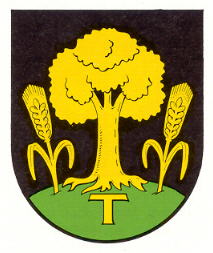Geiselberg: Difference between revisions
Knorrepoes (talk | contribs) m (Text replacement - " / Arms" to "/Arms") |
Knorrepoes (talk | contribs) m (Text replacement - "↵↵'''" to "'''") |
||
| (8 intermediate revisions by the same user not shown) | |||
| Line 1: | Line 1: | ||
'''GEISELBERG''' | '''GEISELBERG''' | ||
| Line 7: | Line 5: | ||
Verbandsgemeinde : [[Verbandsgemeinde Waldfischbach-Burgalben]] | Verbandsgemeinde : [[Verbandsgemeinde Waldfischbach-Burgalben]] | ||
[[File:geiselbe.jpg|center|alt=Wappen von {{PAGENAME}}/Arms of {{PAGENAME}}]] | [[File:geiselbe.jpg|center|alt=Wappen von {{PAGENAME}}/Arms (crest) of {{PAGENAME}}]] | ||
{| class="wikitable" | {| class="wikitable" | ||
| Line 17: | Line 15: | ||
|- | |- | ||
|'''English''' | |'''English''' | ||
| | | blazon wanted | ||
|} | |} | ||
| Line 28: | Line 26: | ||
[[Civic Heraldry Literature - Germany|'''Literature''']]: Debus, 1988 | |||
{{de}} | |||
{{media}} | {{media}} | ||
[[Category:German Municipalities G]] | [[Category:German Municipalities G]] | ||
Latest revision as of 10:00, 27 December 2023
GEISELBERG
State : Rheinland-Pfalz
District (Kreis) : Südwestpfalz
Verbandsgemeinde : Verbandsgemeinde Waldfischbach-Burgalben
| German |
Auf grünem Hügel, darin ein schwebender goldener Buchstabe T, in Schwarz eine mit den Wurzeln aus dem Hügel hervorwachsende goldene Buche, beseitet von je einer ebenfalls aus dem Hügel wachsenden goldenen Ähre. |
| English | blazon wanted |
Origin/meaning
The arms were officially granted on March 5, 1982.
The village was founded by Benedictine monks from the monastery of Hornbach (near Zweibrücken) in the 13th century. During the Protestant Reformation the monastery was dissolved by the Counts Palatinate/Prince Electorate of the Palatinate (Kurfürst und Pfalzgraf). The black and gold colours of the arms refer to the arms of the Count Palatinate to which it belonged before the French Revolution.
Wheat represents the agriculture of the village, the tree (usually named an oak) symbolises the wealth in forests that dominate the area. The curved green foot refers to the name berg = mountain. The letter T represents the former village of Tiefenthal (Deep Valley) out of which the current village developed.
Literature: Debus, 1988
This page is part of the German heraldry portal Deutsche Wappensammlung |
Heraldry of the World |
|
German heraldry:
|
Selected collector's items from Germany:
|
Contact and Support
Partners:
Your logo here ?
Contact us
© since 1995, Heraldry of the World, Ralf Hartemink 
Index of the site












